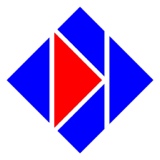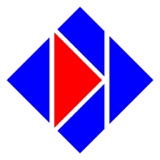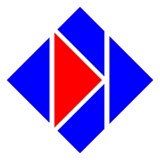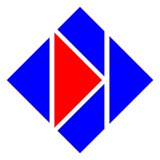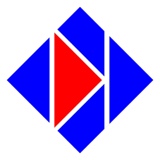Information
-
Document No.
-
Audit Title
-
Client / Site
-
Conducted on
-
Prepared by
-
Location
-
Personnel
Audit Details
Score of 1=No Action, 2=Additional Controls may be needed, 3 or 4= Additional controls required, 6=Immediate Action, 9=STOP
-
If the hazard is present, but is considered to be at a level that additional controls are not required, then the selection should be "safe" (this could be 1 or 2), if additional controls are needed, then the selection should be "at risk" note that if "at risk" the timeliness of the action will depend on the score, a 6 requires immediate action and a 9 means the process MUST STOP
-
Process or Area being assessed
-
Date of Assessment
-
Review period
-
Signature of Assessor
EQUIPMENT AND MECHANICAL HAZARDS
1 - Is there any hazard related to moving parts of the machine or equipment?
-
look for the following hazards related to machinery - entanglement, or friction burns, or being dragged into rotating parts of machinery, are parts of the machine hot and could cause burns, could anyone be stabbed, or crushed, or is there a risk of shearing or impact
-
Is there a risk of any of the above - describe hazard(s) noted
-
Sketch if necessary
-
Who Might be Harmed and how?
-
What controls already exist?
-
What is the Likelihood of Harm?
-
What is the severity?
-
Action(s) required
2 - Is there high pressure fluid (oil/water) or air or vacuum?
-
Is there a hazard related to exposure to high pressure fluids, or compressed air (skin or eye contact or debris from using an airline in the eye). Compressed air, if applied to the skin can cause air bubbles in the blood, which can be very dangerous, whereas oil or other fluid contact can cause problems with skin sensitisation and eye problems
-
Are there high pressure fluids or air or high vacuum?
-
Sketch if necessary
-
Who Might be Harmed and how?
-
What controls already exist?
-
What is the Likelihood of Harm?
-
What is the severity?
-
Action(s) required
3 - Is there potential for ejection of parts from the machine?
-
Is there potential for parts to be thrown out of the machine and hit the operator. For example, a lathe could throw the part out of the machine if not properly located in the chuck or cutting equipment could eject parts when cut, or swarf, debris etc could be ejected from the machine when in operation)
-
Is there potential for ejection of parts from the machine?
-
Sketch if necessary
-
Who Might be Harmed and how?
-
What controls already exist?
-
What is the Likelihood of Harm?
-
What is the severity?
-
Action(s) required
4 - Is there display screen equipment in use
-
Is display screen equipment (eg a computer, terminal etc) in use for a significant part of the normal work by the operator? if yes, then identify the requirement to conduct a VDU assessment in the additional assessments required
-
VDU Assessment required?
5 - Are there hand tools in use?
-
Hand tools (including battery powered tools) used by the operator, must be in good condition, suitable for the task being carried out and be used correctly. Look for things like damaged handles (breaks in hammer handles, and rounding of chisel ends for example), blunt cutting edges, and rounded spanners, sockets or Allen keys
-
Are there any hand tools in use and are they in good condition?
-
Sketch if necessary
-
Who Might be Harmed and how?
-
What controls already exist?
-
What is the Likelihood of Harm?
-
What is the severity?
-
Action(s) required
6 - Is there risk of vibration when using machinery?
-
Is there a risk of vibration from the machinery or equipment being transmitted to the operator. For example, use of hammer drills, grinders etc for significant periods could cause the operator problems with limbs (e.g. work related disorders such as white finger)
-
Is there risk of vibration when using machinery?
-
Sketch if necessary
-
Who Might be Harmed and how?
-
What controls already exist?
-
What is the Likelihood of Harm?
-
What is the severity?
-
Action(s) required
7 - Is lifting equipment in use?
-
Check the lifting equipment in use is properly checked and certified, check that persons carrying out lifting are properly trained to do so, check for any damage or issues with the lifting equipment being used. Check that the lifting equioment being used is suitable for the task (proper lifting slings or eye bolts, cranes being used within load capability etc)
-
Are there any hazards related to lifting equipment?
-
Sketch if necessary
-
Who Might be Harmed and how?
-
What controls already exist?
-
What is the Likelihood of Harm?
-
What is the severity?
-
Action(s) required
INDIVIDUAL
1 - is the individual(s) suited to the work being carried out? (including young person, disability and pregnant workers
-
Look for possible issues with the need for excessive strength or height issues (eg cannot reach to operate the machine properly). Check for issues with pregnancy (or nursing) or disability, then a pregnant mother, or disability risk assessment should be carried out). Ensure you identify this requirement in the additional assessment section
-
Are individuals working in the area suited to the tasks undertaken?
-
Details
-
Who Might be Harmed and how?
-
What controls already exist?
-
What is the Likelihood of Harm?
-
What is the severity?
-
Action(s) required
2 - Are the hours of work excessive or is there a high rate of work involved?
-
Does the operator work excessive hours, and do they have to keep up with a speedy process? (is the process machine or operator led). Do the operators have sufficient rest and recovery time between cycle. Do they have sufficient breaks?
-
Are hours of work excessive and/or is there a high rate of work?
-
Sketch if necessary
-
Who Might be Harmed and how?
-
What controls already exist?
-
What is the Likelihood of Harm?
-
What is the severity?
-
Action(s) required
2 - is there potential for violence from others?
-
People such as customer facing employees, or employees dealing with members of the public, or possibly drivers could be subject to violence from others
-
Is there potential for violence from others?
-
Sketch if necessary
-
Who Might be Harmed and how?
-
What controls already exist?
-
What is the Likelihood of Harm?
-
What is the severity?
-
Action(s) required
3 - is there evidence of unsafe behaviour?
-
Look for evidence of not wearing PPE, bypassing guards, poor practice such as cutting towards themselves, working at height without using correct equipment, using incorrect tool for the job etc
-
Is there any evidence of unsafe behaviour?
-
Sketch if necessary
-
Who Might be Harmed and how?
-
What controls already exist?
-
What is the Likelihood of Harm?
-
What is the severity?
-
Action(s) required
5 - is there a likelihood of stress?
-
Is the worker subject to stressful situations? such as dealing with bereavement, angry customers, very high workload, pressure to perform). This will normally be applicable to management/supervisory roles, although since people have difference tolerances, it could apply anywhere). If in doubt refer this to HR
-
Is there any likelihood or evidence of stress?
-
Sketch if necessary
-
Who Might be Harmed and how?
-
What controls already exist?
-
What is the Likelihood of Harm?
-
What is the severity?
-
Action(s) required
6 - is there a need for individuals working alone?
-
Look for evidence of the need for workers to work without anyone else in the near vicinity. For example if someone is working alone and had an accident, could they summon help? for example working from home, outside normal hours, kiosks or shops etc
-
Is there a need for lone working? and what hazards result?
-
Sketch if necessary
-
Who Might be Harmed and how?
-
What controls already exist?
-
What is the Likelihood of Harm?
-
What is the severity?
-
Action(s) required
7 - Are there any disabled workers or visitors in, or to, the area?
-
If yes then carry out access assessment (including visual and hearing impairment)
8 - is there sufficient information, instruction, training and supervision?
-
Look for evidence of training with respect to H&S, informational/instruction documentation (such as signs, safe systems of work etc).
-
Is there suitable information, instruction, training and supervision to ensure safe working?
-
Who Might be Harmed and how?
-
What controls already exist?
-
What is the Likelihood of Harm?
-
What is the severity?
-
Action(s) required
FIRE AND EXPLOSION
1 - Is there a current fire risk assessment for the zone?
-
If no, then identify the requirement to conduct a Fire Risk Assessment in the additional assessments required
2 - Are flammable materials, dusts, gases, liquids in the area or used in process?
-
look for evidence of flammable materials, such as LPG, Cardboard, paper, oils, solvents etc in the area?. Also look for excessive dust in the atmosphere, which can be an explosion risk
-
Are flammable gases, materials or liquids in the area, or are there dusts in the atmosphere?
-
Sketch if necessary
-
Who Might be Harmed and how?
-
What controls already exist?
-
What is the Likelihood of Harm?
-
What is the severity?
-
Action(s) required
2 - Is there any evidence of electrical fire hazards
-
Look for signs of electrical arcing on cables, plugs and contactors, blocked cooling systems, badly positioned heaters, overloaded electrical outlets etc
-
Is there evidence of electrical fire hazard? if so, what?
-
Sketch if necessary
-
Who Might be Harmed and how?
-
What controls already exist?
-
What is the Likelihood of Harm?
-
What is the severity?
-
Action(s) required
TRANSPORT
1 - Are vehicles in use in the area around workers
-
Are vehicles (Lorries, fork lift trucks, ride on pedestrian trucks etc) in use around the work area - are pedestrians suitably segregated from vehicle movements?. Are there issues with visibility of pedestrians? do vehicles reverse whilst there are pedestrians around? If necessary flag the requirement for a pedestrian/vehicle interaction risk assessment to be carried out
-
Are there workplace transport hazards in evidence, if so what are they?
-
Sketch if necessary
-
Who Might be Harmed and how?
-
What controls already exist?
-
What is the Likelihood of Harm?
-
What is the severity?
-
Action(s) required
INFRASTRUCTURE
1 - Is the building infrastructure around the work areas in good condition?
-
Is there evidence of unsafe structural elements of the building (eg walls, doors, windows, floor etc) ? for example, is the floor level and free from damage, obstruction, or slip/trip hazards, are the walls/windows/door frames, secure and free from elements which could fall off or fail to operate?
-
is the building infrastructure free from hazards?
-
Sketch if necessary
-
Who Might be Harmed and how?
-
What controls already exist?
-
What is the Likelihood of Harm?
-
What is the severity?
-
Action(s) required
2 - Is there any potential asbestos in the area and is it in good condition?
-
Look for areas which could be asbestos, look at the condition. If in doubt, refer to the asbestos survey information. Typically asbestos can be used to lag pipework, or cover pipework but can also be used for the fabric of the building
-
Any signs of asbestos damaged, or paint peeling
-
Sketch if necessary
-
Who Might be Harmed and how?
-
What controls already exist?
-
What is the Likelihood of Harm?
-
What is the severity?
-
Action(s) required
3 - Is storage racking, shelves securely fastened, undamaged and properly loaded?
-
Look for evidence of damage (or unprotected) racking legs, also look for signs of bowing or distortion of the racking, look to ensure that the loading is even, and that the items are stored securely (not likely to topple), make sure the racking is securely fastened to the wall/floor. Is the safe working load specified on the racking, and does it look as if it's overloaded? Arrange for a proper racking survey if in doubt. Is there a risk of falling objects from storage?
-
Are there any hazards related to storage and racking?
-
Sketch if necessary
-
Who Might be Harmed and how?
-
What controls already exist?
-
What is the Likelihood of Harm?
-
What is the severity?
-
Action(s) required
4 - Is access and egress to the work area unrestricted?
-
Check that there are no obstructions or protections making unhindered access and egress possible. Check positions of cable runs, ramps, steps, etc and check area is free from slip and trip hazards
-
Is access and egress to the work area unrestricted and unhindered? and is it free from slip/trip hazards?
-
Sketch if necessary
-
Who Might be Harmed and how?
-
What controls already exist?
-
What is the Likelihood of Harm?
-
What is the severity?
-
Action(s) required
5 - Environmental Considerations
-
Is the temperature, Noise, Lighting, Humidity, Ventilation, vibration, space constraints such that operators Health and Safety is not adversely affected
-
Are environmental factors free from Hazard?
-
Sketch if necessary
-
Who Might be Harmed and how?
-
What controls already exist?
-
What is the Likelihood of Harm?
-
What is the severity?
-
Action(s) required
RADIATION
1 - Are there any Radiation sources (UV, Infra Red, Laser, X-Ray)
-
Look for evidence of any exposure to radiation types: Ultra-Violet (sunlight, welding arc, UV Lamps etc), Infra-red (radiant heaters for example), Laser light (pointers, proximity switches, laser levels etc) and X-Ray (used for non-destructive analysis)
-
Is there potential exposure to any of the above radiation?
-
Sketch if necessary
-
Who Might be Harmed and how?
-
What controls already exist?
-
What is the Likelihood of Harm?
-
What is the severity?
-
Action(s) required
BIOLOGICAL
1 - Is there risk of biological, viral or fungal infection (eg stagnant water or water spray - legionella risk)
-
Exposure to stagnant water, water spray, or contaminated items could cause infections from bacteria such as legionella . Check for cooling system spray, cooling water which has not been changed in a while, mould etc
-
Is there potential exposure to any of the above biological hazards?
-
Sketch if necessary
-
Who Might be Harmed and how?
-
What controls already exist?
-
What is the Likelihood of Harm?
-
What is the severity?
-
Action(s) required
MANUAL HANDLING
1 - Are there significant manual handling issues ? Are there ergonomic issues?
-
Use the HSE MAC tool to determine if the manual handling activities are significant and if so, then identify the requirement to conduct a manual handling assessment in the additional assessments required. Also identify the need for an assessment based on ergonomic grounds (such as twisting, worker position etc)
-
Are there significant manual handling processes involved?
WORKING AT HEIGHT
1 - Is there need for working at height? (including above holes in floor)
-
Working at height can be standing on steps, on a moulding machine, above a hole in the ground etc. Describe the type of working at height and assess the risks involved
-
Is there a need to work at height?
-
Sketch if necessary
-
Who Might be Harmed and how?
-
What controls already exist?
-
What is the Likelihood of Harm?
-
What is the severity?
-
Action(s) required
WORK IN CONFINED SPACES
1 - Is there need to work in confined spaces?
-
Confined spaces typically involves entering things such as trenches, silos, or other containers which could, contain gases, or be a problem in the event of first aid reqiuirements being needed. if so, then identify the requirement to conduct a specific assessment on working in confined spaces in the additional assessments required
-
Are there operations involving work in confined spaces?
ELECTRICITY
1 - Any electrical hazards present?
-
Check for signs of damage or deterioration of fixed electrical installations (cabinets etc). Are all panels locked to prevent unauthorised access? are all portable appliances in good condition, with no exposed wires, damaged casings. Check, if necessary, items have been PAT tested. Note that the guidelines for PAT testing are in the library.
-
is all electrical equipment in safe condition, with access to dangerous voltages prevented?
-
Sketch if necessary
-
Who Might be Harmed and how?
-
What controls already exist?
-
What is the Likelihood of Harm?
-
What is the severity?
-
Action(s) required
CHEMICALS
1 - Is there Dust, fume or gas exposure? is there use of chemicals?
-
Check for excess dust, fume or gas exposure, and check for the use of TOXIC, IRRITANT, SENSITISING, CORROSIVE, or CARCINOGENIC chemicals in the area. Check there is no risk of inhalation, ingestion or skin/eye contact with any of these.
-
Is there exposure to dust fume or gas, or chemicals? if so, then identify the requirement to conduct a specific COSHH assessment in the additional assessments required
ENVIRONMENTAL ISSUES
-
Gas, Fuel, Electricity or compressed air usage (Describe Issue and action(s) required)
-
Waste Issues? (describe waste types and action(s) required)
-
Air Emissions (describe potential for air emissions and action(s) required)
-
Liquid Emissions (Describe potential for liquid Discharges and action(s) required)
-
Other Environmental Concerns (Describe issue and action(s) required)
Additional Risk Assessments Identified as needed (yes=required, no=available, N/A = not relevent)
-
Provision & Use of Work Equipment
-
Select this if there is work equipment which needs to be checked against the requirements of PUWER in the area (all tools and machines provided for work are generally covered by this regulation. However only machinery is typically assessed using t
-
Dangerous Substances and Explosive Atmosphere Regulations Assessment?
-
Select this in the event that you identify potentially explosive atmosphere's (such as gas storage, lead/acid battery charging, solvent stores, welding bottles etc)
-
Pedestrian/Vehicle Interaction Assessment
-
Select this where there is significant pedestrian vehicle interaction (for example goods inwards personnel on the yard unloading lorries, where people are around when lorries are reversing etc)
-
Fire Risk Assessment?
-
Fire Risk Assessment?
-
Select this where there is no fire risk assessment in the zone already conducted, or where the assessment is not current
-
Select this where there is no fire risk assessment in the zone already conducted, or where the assessment is not current
-
PPE Assessment (Personal Protective Equipment)
-
Select this where there is a need to assess the PPE requirements of employees in the area
-
Lone Working Assessment (if workers are working on their own)
-
Select this where there is a need to specifically assess the risks related to people working alone
-
COSHH? (Control of Substances Hazardous to Health (if chemicals are in use)
-
Select this where the employee is using chemicals and it is necessary to carry out an assessment on a chemical not already covered in the COSHH register
-
VDU Assessment (If computers are in use)
-
Select this where a significant part of the employees time is spent on a computer or terminal screen and it is necessary to conduct an assessment on that use because it has not previously been carried out
-
Vibration assessment
-
Select this where a piece of equipment transmit vibrations to the operative (examples might be use of a pneumatic drill, grinder etc) used for a significant amount of time
-
Access Assessment (Disability)
-
Select this where there is a requirement to assess access for a disabled person, whether than person is an employee or visitor
-
Young Person (anyone in the area under 18 years old?)
-
Select this if there is an employee in the area who is under the age of 18 years. These kind of employees pose a specific risk due to inexperience and immaturity.
-
Pregnant Workers (anyone in the area pregnant or nursing?)
-
Select this if there there is an employee in the area who is, or is suspected of being, pregnant. This also includes nursing mothers. Pregnant or nursing mothers pose a specific risk because of the potential effect on their work on the unborn child, or on the child being nursed.
-
Manual Handling (any activities such as moving items, repetitive operations etc)?
-
Select this, if there are significant manual handling activities in the area (as defined by the MAC tool - see library) which have not been assessed?
-
Noise Levels (any high noise levels in the area which require measurement?)
-
Select this, if there are noise issues, not already covered by the latest noise survey which require further assessment or investigation (for example a process change resulting in increased noise levels, or a deterioration in a motor for example)
-
Lifting Operations (any lifting operations of lifting equipment which requires further assessment?)
-
Select this, if there is lifting equipment which requires further investigation to ensure it is covered under appropriate statutory examination
-
Any Task Specific Assessments required? (enter details)
-
Select this, and describe the assessments required if a further, more detailed assessment is required, on a specific aspect of the process (for example maintenance activities, tool fitting activities, breakdown situations etc)
